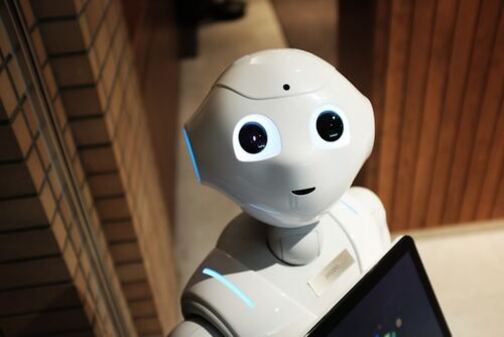In an age where technology and education are inextricably linked, the concept of “robots dot to dot” arises as an enthralling blend of art, engineering, and cognition. Nattapong, a dynamic endeavor that combines these aspects into a unique blend of learning through play, is one source of inspiration in this regard. In this blog article, we’ll look at the interesting world of robots dot to dot nattapong, including its uses, benefits, and potential to transform the way children and enthusiasts interact with robotics and creativity.
What is Robot Dot to Dot Nattapong?
Robots are fundamentally dot to dot Nattapong is a type of creative exercise in which participants are challenged to connect dots in a sequence that eventually forms a recognized image or shape, sometimes with robotic motifs or elements. This interactive approach combines classic drawing and puzzle-solving techniques with the dynamic world of robots. Such exercises can be carried out using worksheets, digital applications, or even physical setups in which robots can help create the visuals to interest users even more.
The vision behind Nattapong
The Nattapong program aims to promote children’s creativity and critical thinking by combining technology and enjoyable learning experiences. The name “Nattapong” refers to an avenue that allows children and learners to study the complexities of robotics while also encouraging individualism and artistic expression. This strategy helps to bridge the gap between abstract robotics concepts and practical results, reinforcing learning through participation.
Why Do Dot to Dot Activities?
Cognitive development
Dot-to-dot activities serve numerous cognitive functions. Such activities promote focused attention, improve fine motor skills, and contribute in the development of problem-solving abilities. As participants follow the sequence, they not only learn numerical order or letters, but also increase their hand-eye coordination, spatial awareness, and concentration levels—all of which are crucial abilities in disciplines such as robotics.
Art & Technology
Robots connect the dots Nattapong exemplifies a stunning fusion of art and technology. While classic dot-to-dot challenges encourage artistic abilities such as drawing and coloring, introducing robots offers an exciting twist. Participants are not just connecting numbers; they are also interacting with technology, encouraging curiosity about how robotics work, and so promoting STEM (Science, Technology, Engineering, and Mathematics) education in an interesting manner.
How to Discover Robots using Dot-to-Dot Nattapong
For educators
Classroom Integration: Teachers can construct dot-to-dot worksheets with robotics-related themes. Educators can use assignments that are tailored to the abilities of their pupils as exercises in geometry, sequencing, and technology.
Integrating robotics into maker spaces through dot-to-dot activities provides hands-on experiences. Students can program miniature robots to draw dot-to-dot pictures by following commands provided through coding platforms.
Collaborative Projects: Encourage students to collaborate in groups to build robotic-themed dot-to-dot drawings. They can compete against one another or work together to improve their drawings.
For Parents.
At-Home Activities: Parents can download robot-inspired dot-to-dot worksheets and plan family game nights. As family members collaborate, they can improve not only their cognitive skills but also their bonding time.
Digital Platforms: There are several apps available that provide interactive robotics dot-to-dot tasks. Parents can guide their children through these platforms, helping them improve their digital literacy while having exciting learning experiences.
Incorporating Art: Children can paint or color the finished designs to strengthen their artistic side while also making a visual connection to the robotic concept.
For enthusiasts
For those with more skill in robotics or painting, developing your own dot-to-dot robotic tasks can be extremely rewarding. Dot to dot pictures inspired by robotics can be designed and automated using equipment such as laser cutters, 3D printers, and even coding platforms.
Future of Robots Dot-to-Dot Nattapong
As technology advances, so will the ideas surrounding educational robots. Using current technology to adapt traditional tasks like dot to dot brings up new possibilities for creativity. We may anticipate developments such as augmented reality (AR) dot-to-dot experiences, which allow users to virtually see completed graphics, increasing engagement and interactivity.
Final thoughts.
Robots connect the dots Nattapong embodies a forward-thinking approach to nurturing creativity through robotics. It smoothly integrates engineering principles with creative expression, resulting in a well-rounded educational experience. This effort not only enhances cognitive capabilities but also encourages interest about the technology world around us. As schools, parents, and enthusiasts embrace this merger of creation and learning, we all contribute to raising a generation that appreciates and comprehends the beauty and complexities of both art and technology.
Incorporating such interesting activities into our life can generate an interest in robotics while also benefiting individuals’ overall development. The future is in our hands; let us enjoy the enjoyment, creativity, and wisdom that robots dot to dot Nattapong provide.
